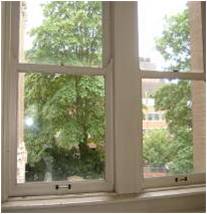Did You Know

Indoor Air Quality
EPA studies indicate indoor levels of pollutants may be up to ten times higher than outdoor levels.
Source: Environmental Protection Agency (2008). An Introduction to Indoor Air Quality![]() .
.
High-Performance Buildings Marketplace
40% of U.S. architects, engineers, contractors, building owners and building consultants report that the majority of building work was green in 2012. It is expected that 53% of these U.S. firms will be engaged in mostly green building work by 2015. 44% of all nonresidential building project starts were green in 2012 as well, up from 2% in 2005. Green buildings hold strong appeal for both commercial and institutional (including government) owners.
Source: McGraw Hill Construction (2013). 2013 World Green Building Trends SmartMarket Report![]() .
.
Buildings' Energy Use
Water Consumption
Between 1950 and 2000, the U.S. population nearly doubled. However, in that same period, public demand for water more than tripled. Americans now use an average of 100 gallons of water each day—enough to fill 1,600 drinking glasses. Source: EPA WaterSense![]()
Buildings' Water Use
Water use in commercial and institutional facilities, such as office buildings and hospitals, account for 17% of publicly-supplied water use in the U.S.
Source: EPA WaterSense![]()
U.S. Waste and Recycling
The U.S. generated approximately 251 million tons of municipal solid waste (MSW) in 2012. Almost 87 million tons were recycled and composted, which represents a 34.5% recycling rate. Solid waste generated per capita is the lowest since the 1980s. This is a 3 percent increase in the tons recycled.
Reduce facility waste with SFTool Continue reading: U.S. Waste and RecyclingRecycling Bottles
Recycling a single plastic bottle can conserve enough energy to light a 60-watt bulb for up to 6 hours.
Source: Bureau of International Recycling Continue reading: Recycling BottlesPost Consumer Fiber Paper
Every ton (about 40 cartons) of 30% postconsumer content copier paper saves the equivalent of 7.2 trees
Source: ConservaTree![]()
IEQ and Asthma
Indoor contaminants such as dust mites, molds, cockroaches, pet dander, secondhand smoke and some chemicals can trigger asthma attacks. About one in 16 children and one in 12 adults suffer from asthma.
Source: CDC | Asthma![]()
When You Pass FEDSAT, You Also Earn One Hour of Continuing Education
You can get one free hour’s worth of continuing education / professional development by passing the Federal Facilities Skills Assessment Tool (FEDSAT)!
Take the Assessment Continue reading: When You Pass FEDSAT, You Also Earn One Hour of Continuing EducationLED Price Drop
LED prices have dropped rapidly in recent years. They are now more lifecycle cost effective than fluorescents in every lighting application.
Source: U.S. Department of Energy, Sept 2017, SSL 2017 Suggested Research Topics Supplement, Technology and Market Context![]()
Building Heating, Ventilation, and Air Conditioning (HVAC)
Building Plug Loads
Energy Savings Performance Contracts (ESPCs)
Helpful Tools
Check out our helpful tools for everyday tasks, including understanding federal requirements, project planning, procurement, and O&M.
Explore our Tools Continue reading: Helpful Tools
